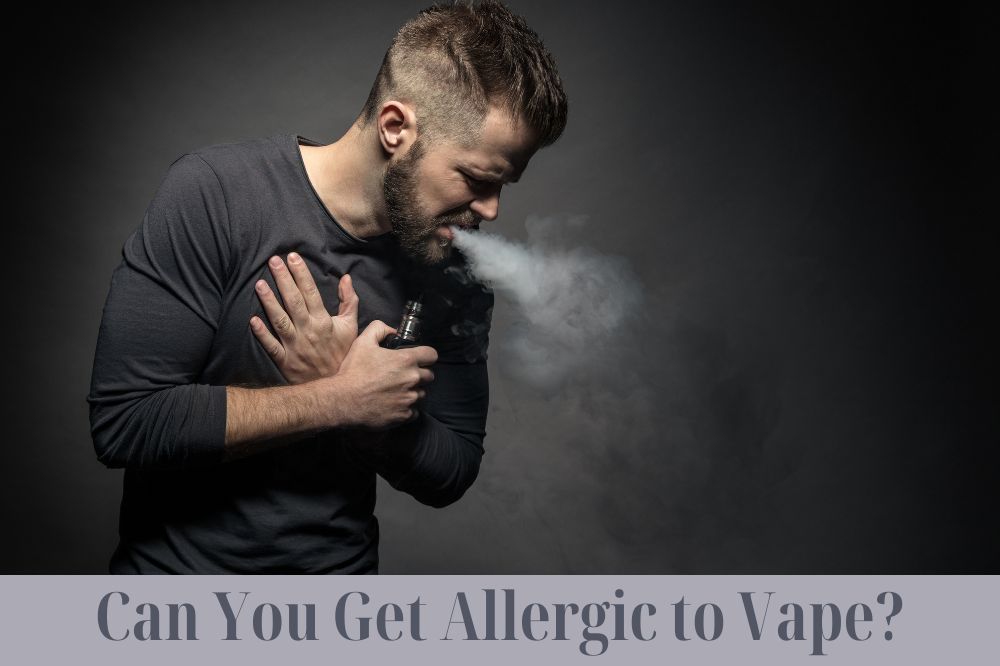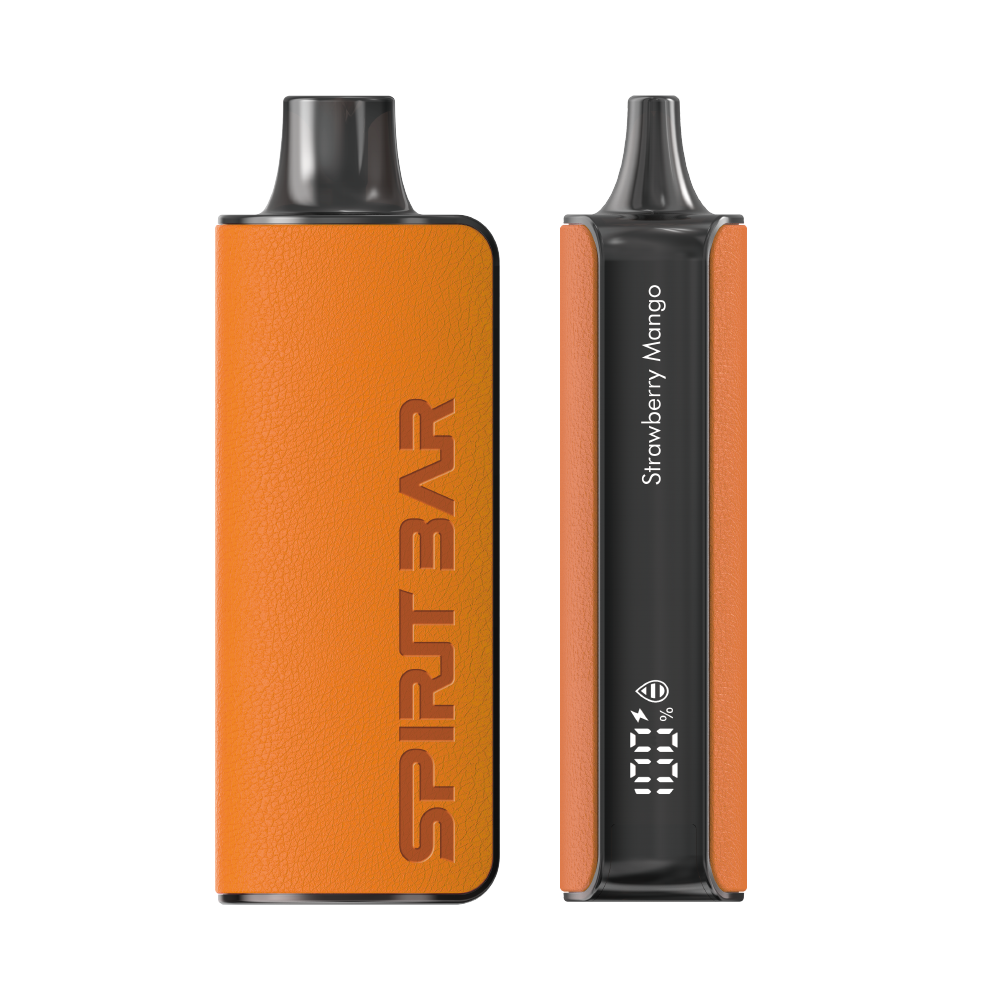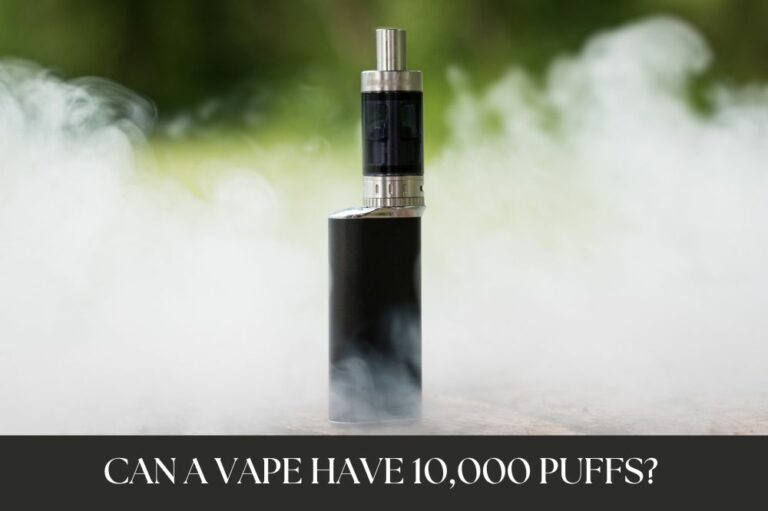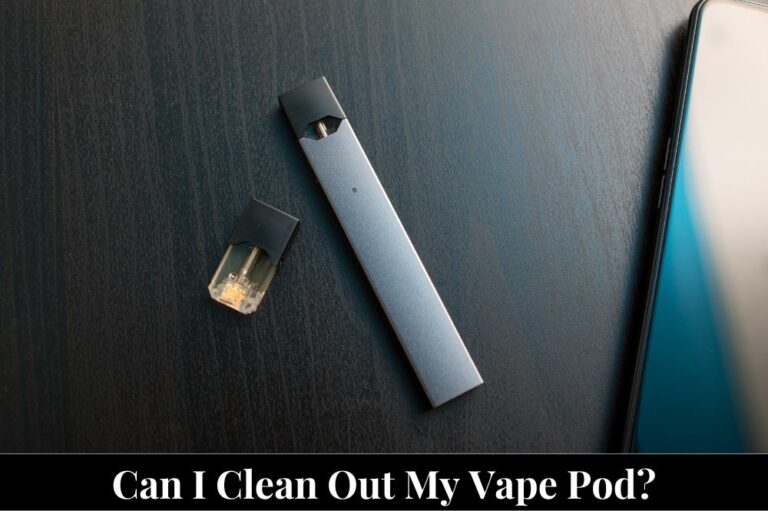
If you’re a vaper, you may be wondering whether it’s possible to develop an allergy to vape. While vaping is often marketed as a safer alternative to smoking, it can still cause health problems, especially for those with pre-existing conditions like asthma or allergies. Allergic reactions from vaping are uncommon, but possible.
Symptoms of an allergy to vape can include coughing, wheezing, or shortness of breath after vaping. It’s important to note that these symptoms can also be caused by other factors, such as a respiratory infection or exposure to irritants like air pollution. If you’re experiencing these symptoms after vaping, it’s a good idea to talk to your doctor to rule out other potential causes and determine whether an allergy to vape is the culprit.
While the exact causes of allergies to vape are not yet fully understood, some people may be allergic to the propylene glycol (PG) or vegetable glycerin (VG) in e-liquids. Other components of e-liquids, such as flavorings or nicotine, may also cause allergic reactions in some people. If you suspect that you may be allergic to vape, it’s important to seek medical advice to identify the specific cause of your symptoms and determine the best course of treatment.
Understanding Vaping and E-Cigarettes
If you’re curious about vaping or e-cigarettes, it’s essential to understand what they are and how they work. E-cigarettes are electronic devices that heat a liquid (e-liquid) to create a vapor that the user inhales. This liquid usually contains nicotine, flavorings, and other chemicals, including propylene glycol and vegetable glycerin.
Vaping has become increasingly popular in recent years, with many people using e-cigarettes as an alternative to traditional cigarettes. However, it’s important to note that vaping is not risk-free, and there are potential health concerns associated with using e-cigarettes.
One of the concerns is the risk of developing an allergy to vape. While the exact cause of an allergy to vape is not yet fully understood, it’s believed that the chemicals and additives in e-cigarettes can trigger an allergic reaction in some individuals. Additionally, some people may be allergic to the propylene glycol or vegetable glycerin used in e-liquids.
Symptoms of an allergy to vape can vary, but they may include coughing, wheezing, shortness of breath, chest tightness, and skin irritation. If you experience any of these symptoms after using an e-cigarette, it’s important to stop using it immediately and seek medical attention if necessary.
It’s also important to note that vaping on a plane is strictly prohibited and can result in immediate penalties ranging from fines to potential criminal charges. Therefore, it’s best to comply with the regulations in place to avoid facing such consequences.
Allergies: A Brief Overview
If you’re considering vaping, it’s important to know that some people can develop allergies to e-cigarettes. Allergies occur when the immune system overreacts to a substance, known as an allergen. The symptoms of allergies can range from mild to severe and can even be life-threatening in some cases.
Common symptoms of allergies to vaping include:
SPIRITBAR Katana BP10000
- Slender, leather-textured body reminiscent of a katana handle for an authentic samurai feel
- Unique samurai-inspired e-liquid flavor - fruity yet not too sweet, with a luxurious, elegant aroma
- Powerful 650mAh rechargeable battery for extended vaping time
- Large 18ml e-liquid capacity and 10,000 puff capacity
- Advanced mesh coil and e-liquid & power display screens for optimal vaping experience
The special juice captures the essence of the samurai spirit with its rich, smoothly pulsating flavor that brings new satisfaction with every puff. The device's slender, leather-textured design evokes the grip of a samurai's katana, making this product a perfect choice for beginner vapors.
- Skin rashes
- Itchy eyes
- Sneezing
- Nasal congestion
- Wheezing
- Coughing
- Shortness of breath
It’s important to note that allergic reactions to vaping are relatively uncommon, but they can occur. Some people may be allergic to the chemicals and additives in e-cigarettes, while others may be allergic to the propylene glycol or vegetable glycerin used in e-liquids.
If you experience any of these symptoms after vaping, it’s important to stop using e-cigarettes and seek medical attention. Your doctor can help you determine if you have an allergy to vaping and recommend appropriate treatment.
In some cases, switching to an e-liquid with natural ingredients may be helpful in reducing the risk of an allergic reaction. However, it’s important to choose a trusted brand and to be aware of the ingredients in your e-liquid to avoid any potential allergic reactions.
Potential Allergens in Vaping
When it comes to vaping, there are several potential allergens that you should be aware of. While allergic reactions to vaping are rare, it’s important to know what you’re inhaling and how it could affect your health.
One of the most common allergens in vaping is propylene glycol (PG). PG is a synthetic compound that is used in many e-liquids to create a smoother vaping experience. However, some people are allergic to PG and may experience symptoms such as hives, rashes, wheezing, coughing, sore throat, nausea, headaches, swelling, and itchy eyes. If you’re allergic to PG, consider switching to a PG-free (100 percent VG) e-liquid.
SPIRITBAR Jack’s Flask 9000 Puffs
- Stylish pirate flask-shaped body providing an exciting vaping experience
- Delivering up to 9000 puffs per device
- 20ml e-liquid capacity with 50mg nicotine strength for satisfying throat hit
- Specialized pirate-themed e-juice flavors for rich, swirling taste
- Premium mesh coil optimizes flavor profile for maximum vaping enjoyment
This disposable vape captures the daring spirit of the high seas with its flask styling and signature pirate e-juice flavors. The extraordinary battery life provides 9000 indulgent puffs for extended vaping pleasure. Live boldly and freely with the Jack's Flask - a legendary vaping experience fit for a pirate's adventures.
Another potential allergen in vaping is flavorings. While flavorings can make vaping more enjoyable, they can also cause allergic reactions in some people. If you’re prone to allergies, it’s important to choose e-liquids that are free from artificial flavorings and dyes. Look for e-liquids that use natural ingredients, such as fruit extracts or essential oils.
In addition to PG and flavorings, some people may be allergic to other components of e-liquids, such as nicotine or vegetable glycerin (VG). If you experience any symptoms after vaping, it’s important to talk to your doctor. They can help you identify the cause of your symptoms and recommend a course of treatment.
Overall, while allergic reactions to vaping are rare, it’s important to be aware of the potential allergens in e-liquids. By choosing high-quality e-liquids that are free from artificial ingredients and potential allergens, you can minimize your risk of experiencing an allergic reaction while vaping.
Nicotine Allergy
If you experience symptoms like wheezing, coughing, or shortness of breath after vaping, you may have a nicotine allergy. Nicotine allergy is not very common, but it can happen to anyone, even if you’ve been vaping for a long time without any issues.
Nicotine allergy can cause a range of symptoms, including hives, itching, and difficulty breathing. In severe cases, it can even lead to anaphylaxis, a life-threatening allergic reaction.
If you suspect that you have a nicotine allergy, it’s important to see a doctor as soon as possible. They can perform tests to confirm the allergy and recommend the best course of treatment.
One way to avoid nicotine allergy is to switch to nicotine-free e-liquids. You can also try reducing your nicotine intake gradually to see if that helps alleviate your symptoms. If you continue to experience symptoms, it’s best to stop vaping altogether and seek medical advice.
In conclusion, while nicotine allergy is not very common, it can cause serious health problems. If you experience symptoms like hives, itching, or difficulty breathing after vaping, it’s important to see a doctor as soon as possible and consider switching to nicotine-free e-liquids.
Allergic Reactions to Propylene Glycol and Vegetable Glycerin
If you are experiencing allergic reactions while vaping, it could be due to propylene glycol (PG) or vegetable glycerin (VG) found in e-liquids. These substances are used to create thicker vapor and carry nicotine and flavors.
PG is a synthetic alcohol that has the potential to cause allergic contact dermatitis in some individuals. It is a viscous, colorless, and odorless liquid with low toxicity. Symptoms of PG allergy can include:
- Itching
- Redness
- Swelling
- Hives
- Rash
- Eczema
- Dry or flaky skin
On the other hand, VG is a natural compound derived from vegetable oil. It is a thicker liquid that produces more vapor than PG. While VG is generally considered safe, some people may still experience allergic reactions to it. Symptoms of VG allergy can include:
- Runny nose
- Congestion
- Sore throat
- Headache
- Nausea
- Diarrhea
It is important to note that not all throat irritation or other symptoms experienced while vaping are necessarily due to an allergic reaction. Sometimes, it can be due to the nicotine or other chemicals present in the e-liquid.
If you suspect that you are allergic to PG or VG, you should stop using e-liquids that contain these substances and switch to e-liquids that use alternative ingredients like nicotine salts or natural extracts. It is also recommended that you consult with a healthcare professional to confirm the allergy and receive proper treatment.
Flavorings and Allergies
When it comes to vaping, flavorings are a popular way to enhance the experience. However, some vapers may experience allergic reactions to certain flavorings. Here are some common flavorings that may cause allergies:
Cinnamon
Cinnamon is a popular flavoring in many e-liquids, but it can also cause allergic reactions in some people. Symptoms can include itching, swelling, and even difficulty breathing. If you experience any of these symptoms after vaping a cinnamon-flavored e-liquid, stop using it immediately and seek medical attention if necessary.
SPIRITBAR Katana BP10000
- Slender, leather-textured body reminiscent of a katana handle for an authentic samurai feel
- Unique samurai-inspired e-liquid flavor - fruity yet not too sweet, with a luxurious, elegant aroma
- Powerful 650mAh rechargeable battery for extended vaping time
- Large 18ml e-liquid capacity and 10,000 puff capacity
- Advanced mesh coil and e-liquid & power display screens for optimal vaping experience
The special juice captures the essence of the samurai spirit with its rich, smoothly pulsating flavor that brings new satisfaction with every puff. The device's slender, leather-textured design evokes the grip of a samurai's katana, making this product a perfect choice for beginner vapors.
Citrus
Citrus flavors, such as lemon and lime, are also common in e-liquids. However, some people may be allergic to citrus fruits, which can cause symptoms such as itching, hives, and swelling. If you have a citrus allergy, it’s best to avoid e-liquids with these flavors.
Menthol
Menthol is a popular flavoring that gives e-liquids a cooling sensation. However, some people may be allergic to menthol, which can cause symptoms such as itching, hives, and swelling. If you experience any of these symptoms after vaping a menthol-flavored e-liquid, stop using it immediately and seek medical attention if necessary.
Other Flavorings
Other flavorings that may cause allergic reactions include vanilla, coconut, and chocolate. If you experience any symptoms after vaping a flavored e-liquid, stop using it immediately and consult with your doctor.
It’s important to note that not all vapers will experience allergic reactions to flavorings. However, if you have a history of allergies, it’s best to be cautious and avoid e-liquids with flavorings that you know you are allergic to. Always read the ingredient list carefully and choose e-liquids that are free from any ingredients that may cause allergic reactions.
Symptoms of Vaping Allergies
If you are experiencing symptoms like coughing, wheezing, or shortness of breath after vaping, you may have an allergy to vape. While vaping is often marketed as a safer alternative to smoking, it can still cause health problems, especially for those with pre-existing conditions like asthma or allergies.
Here are some common symptoms of vaping allergies:
- Coughing
- Wheezing
- Shortness of breath
- Chest tightness
- Sore throat
- Headache
- Nausea
- Vomiting
- Diarrhea
- Itchy or watery eyes
- Skin rash or hives
It’s important to note that these symptoms can also be caused by other factors, such as a respiratory infection, so it’s important to consult with your healthcare provider if you are experiencing any of these symptoms.
If you suspect that you may have a vaping allergy, it’s important to stop vaping immediately and seek medical attention. Your healthcare provider may recommend allergy testing to determine the specific allergen causing your symptoms.
It’s also important to note that allergic reactions from vaping are pretty rare, but they can happen. So, if you’re experiencing any of these symptoms after vaping, it might be worth considering if you’re allergic to something in your vape juice.
Diagnosis of Vaping Allergies
If you suspect that you have an allergy to vaping, it’s important to see a doctor for a proper diagnosis. There are several tests that your doctor can perform to determine if you have an allergy to vaping.
One of the most common tests is a skin prick test. During this test, a small amount of the suspected allergen is placed on your skin, and then your doctor will prick your skin to allow the allergen to enter your body. If you have an allergy to the substance, your skin will become red, swollen, and itchy.
Another test that your doctor may perform is a blood test. This test measures the amount of antibodies in your blood that are produced in response to the allergen. If your blood test shows a high level of antibodies to a specific substance, it is likely that you are allergic to that substance.
It’s important to note that symptoms of vaping allergies can be similar to other respiratory conditions, such as asthma or bronchitis. Therefore, it’s important to see a doctor to get an accurate diagnosis.
If you are diagnosed with a vaping allergy, your doctor may recommend that you avoid vaping altogether. They may also prescribe medication to help manage your symptoms, such as antihistamines or corticosteroids.
Overall, if you suspect that you have an allergy to vaping, it’s important to see a doctor for a proper diagnosis. With the right diagnosis and treatment, you can manage your symptoms and continue to live a healthy, active life.
Treatment Options for Vaping Allergies
If you are experiencing symptoms of a vaping allergy, it is important to seek medical attention. Your healthcare provider can help you identify the specific allergen and recommend appropriate treatment options.
Antihistamines
Antihistamines are a common treatment for allergic reactions, including those caused by vaping. These medications work by blocking the effects of histamine, a chemical released by the body in response to allergens. Antihistamines can help relieve symptoms such as itching, swelling, and hives.
Corticosteroids
Corticosteroids are another type of medication that can be used to treat allergic reactions. These medications work by reducing inflammation in the body. Corticosteroids can be taken orally or applied topically to the affected area.
Bronchodilators
Bronchodilators are medications that can be used to treat respiratory symptoms caused by vaping allergies. These medications work by relaxing the muscles in the airways, making it easier to breathe. Bronchodilators can be taken orally or inhaled using an inhaler or nebulizer.
Allergen-Free E-Liquids
If you have a known allergy to a specific ingredient in e-liquids, such as propylene glycol or vegetable glycerin, you may be able to find allergen-free e-liquids on the market. These products are specifically formulated to minimize potential allergens and may be a suitable alternative for individuals with allergies or sensitivities.
Avoiding Triggers
The best way to prevent allergic reactions caused by vaping is to avoid triggers altogether. If you have a known allergy to a specific ingredient, be sure to read product labels carefully and avoid products that contain that ingredient. Additionally, if you experience symptoms of an allergic reaction while vaping, stop using the product immediately and seek medical attention.
Remember, if you are experiencing symptoms of a vaping allergy, it is important to seek medical attention. Your healthcare provider can help you identify the specific allergen and recommend appropriate treatment options.
Prevention Tips
If you’re a vaper and you’re concerned about developing an allergy to vaping, there are a few things you can do to minimize your risk. Here are some prevention tips:
1. Know the Ingredients
It’s important to know the ingredients in your e-liquid. Check the label to see what’s in it, and do some research to learn more about the ingredients. If you’re allergic to any of the ingredients, avoid using that e-liquid.
2. Choose High-Quality E-Liquids
Choose high-quality e-liquids from reputable manufacturers. Cheap e-liquids may contain low-quality ingredients that could trigger an allergic reaction.
3. Test New E-Liquids Carefully
When trying a new e-liquid, test it carefully. Start with a small amount and wait to see if you have any allergic reactions before using more.
4. Avoid Flavors That Trigger Allergies
If you know that you’re allergic to certain flavors, avoid e-liquids that contain those flavors. For example, if you’re allergic to nuts, avoid e-liquids that contain nut flavors.
5. Keep Your Vaping Equipment Clean
Keep your vaping equipment clean to minimize the risk of developing an allergic reaction. Clean your tank, coil, and mouthpiece regularly.
6. See a Doctor if You Develop Symptoms
If you experience symptoms of an allergic reaction, such as a rash, hives, or difficulty breathing, stop vaping and see a doctor immediately. Allergic reactions can be serious and potentially life-threatening, so it’s important to get medical help right away.
By following these prevention tips, you can minimize your risk of developing an allergic reaction to vaping.








